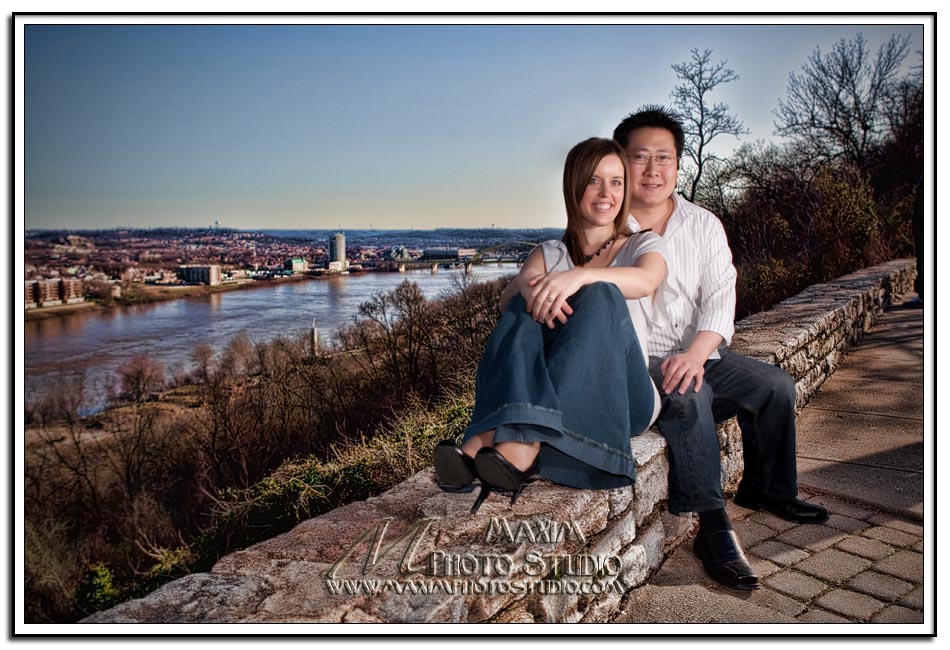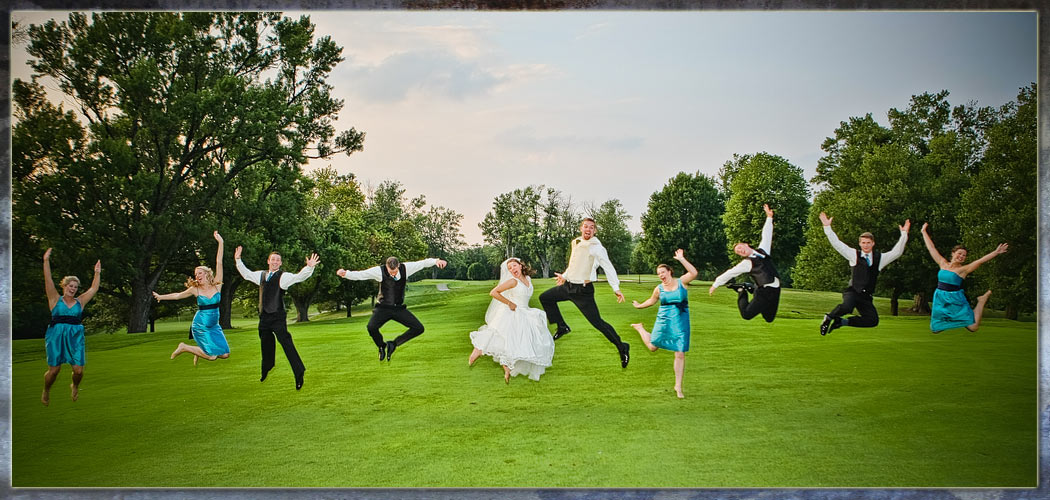I helped my Creative Director Niki Jahns with some creative shots during her recent engagement shoot. This may be a little technical, but this is what every good wedding photographer must understand immediately and be able to correct on the spot. Here are a couple of shots and how I went about getting the result.
This first image was shot at about 4 PM with bright sun beaming from the right side. My concept was to bring the blue sky and the landscape into prominence, but if I did that I would terribly underexpose the subjects. I needed to expose for the background and use flash and balance it with the ambient light. Luckily, photographers best friends on sunny days is a translucent diffuser and a flash with High-Sync speed to fill in the deep shadows. High-Sync is a flash function which fires continuously during the exposure providing even illumination. However, having one flash is often not enough as I found out in this case. In the end I used three flashes and high-synced all of them and set them up to fire at the same time. I positioned them about 5 feet from the subjects and the result is great lighting on the foreground and background.

This second image was taken at 10 PM on the same day in a very dark location. The difficulty with this shot is that I wanted to light the downtown Cincinnati skyline and also illuminate the subjects. Absent any other lighting, I would have to wait 5-10 seconds to get the buildings to light up and also provide enough illumination on the subjects to bring them into focus. The problem with this setup, is that human body has a difficult time staying still and remaining perfectly still for 5-10 seconds is almost impossible. Having anticipated this situation, I brought along my LightPanels Daylight balanced bulbs and lit Chris and Leah from about 45 degrees on the left. LightPanels produce a larger light source than a traditional flash and hence you can see them being lit from head to toe. Lastly, notice the composition as Niki and I put the subjects following the rule of thirds and allowing for leading lines of the bridge.








